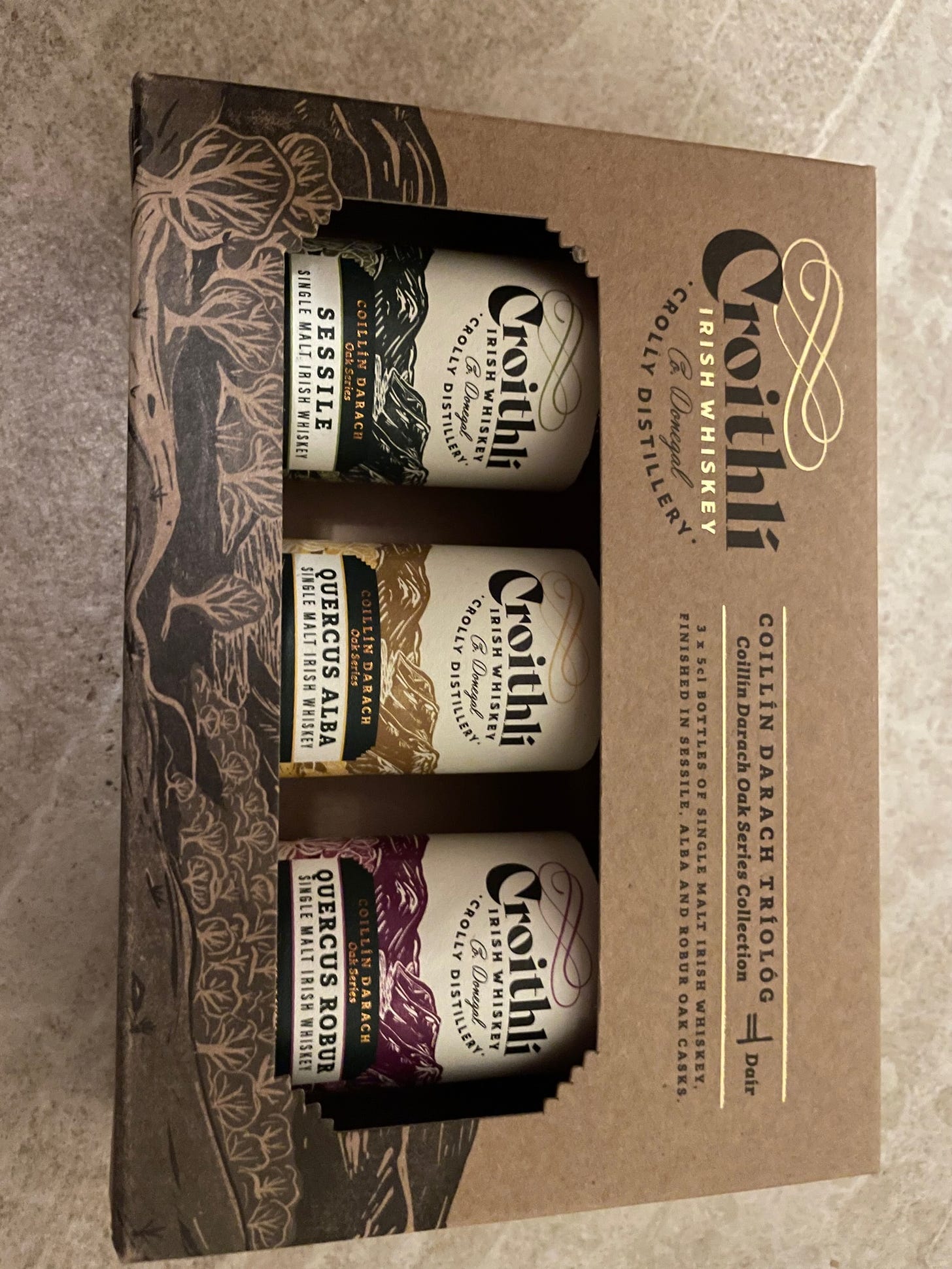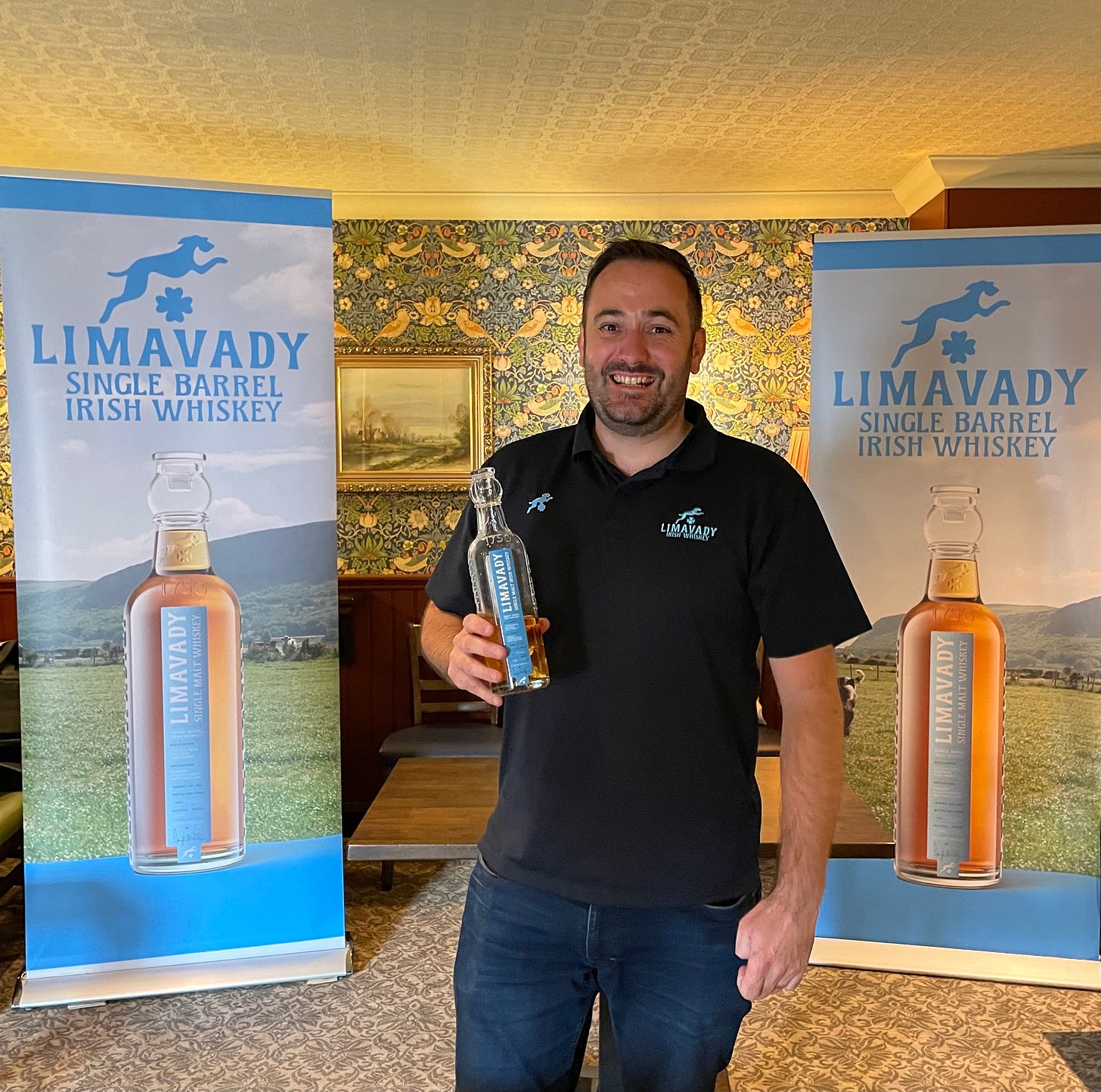AS in hurling, Antrim and Down dominate the Ulster whiskey landscape, from the north coast to the Ards peninsula and down to the border.
Perhaps their proximity to Scotland, in terms of geography, culture, and demographics, offers some explanation, as well as the population density in those areas.
Yet distilleries are springing up throughout the north of Ireland, especially in Donegal. The Tir Chonaill county reputedly had a still on every hill but the legitimate distilleries are emerging too.
Indeed, Donegal has made a sensible start on an alphabet of whiskey-makers: Ardara, Baoilleach, and Croithli.
The first of those is the longest-established and best-known, home to Sliabh Liag Distillers, named for the nearby mountain.
Their self-proclaimed mission, headed by James Doherty, is to ‘reclaim the distilling heritage of Donegal’, which to a large degree involves peated whiskeys. The make vodka and gin too, but it’s the Silkie whiskeys, nodding to the legend of the seal-woman, which are of interest to us.
Baoilleach is at the far end of the county, Carrigart on Mulroy Bay, the latter giving its name to gins, rums, and poitins. Billing itself as Donegal’s first grain distillery in more than a century (legal, anyway), Baoilleach owner/ distiller Michael R O’Boyle is extraordinarily imaginative and innovative, even by the exciting standards (if that’s not a contradiction in terms) of these times.
Try a drop of The Cratur poitin, and also of the various ‘Donegal Mountain Dew’ types – whiskey in all but name, small batches produced with a variety of mash bills – mixtures of grains to you and me.
Samples courtesy of Crolly Distillery in Donegal (not guaranteed to get you sideways).
The Croithli/ Crolly Distillery is based in , well, Croithli, Killindarragh. Near Gweedore to outsiders. They used direct-fired pot stills sourced from the Cognac region of France; yep, I’m salivating too.
The distillery is actually in the Coillín Darach townland – meaning small oak grove, so their whiskeys come in three different oak cask finishes, Sessile, European, and American.
Heading back east, and north, Derry has the Limavady distillery, with a long heritage, both in the town and within the founders’ family, the McNallys, brothers Martin and Darryl. The latter spent almost 17 years as a distiller with Bushmills before moving to Dublin Liberties.
Limavady also has the distinction of having a distillery operational from 1750 to 1910; which just happens to have been based in the McNallys’ backyard. Top tip – make sure to buy one of the limited edition ‘bulb’ glass bottles; they may not be produced again. The single barrel malt whiskey inside is special too.
Martin McNally of Limavady Whiskey
South Derry has a newbie, An Carn – Sperrins Distillery, at the foot of Carntogher, encompassing Slaughtneil, Tirkane, Glen, and Maghera. It’s aiming to make high quality malt whiskey from locally grown barley, Lough Bann spring water, heated and flavoured by peat from the nearby bogs.
In Fermanagh and Tyrone, there’s Scott’s of Garrison in the former, Wild Atlantic Way near Aghyaran in the latter. You’ll have to wait for WAW whiskey, but they have gin and vodka garnering accolades already, and a whiskey club you can join.
Take this as official notice: this time next year I’ll have built the first official whiskey distillery in south Tyrone.
Given that I might have some legal issues with calling it ‘The Bush’ or naming it after my late dad, Jack, I’ll probably call it Keenaghan Distillery, especially if my mother gives me that field.
As for the other counties, Armagh, Cavan, and Monaghan have some catching up to do. However, Old Carrick Mill, near Carrickmacross, is already making gin, and has ‘May-Loag’ whiskey in the pipeline.
Next time: Go west, young and old whiskey drinkers.





How about calling it “Old Grey Mother”, founded 1614?